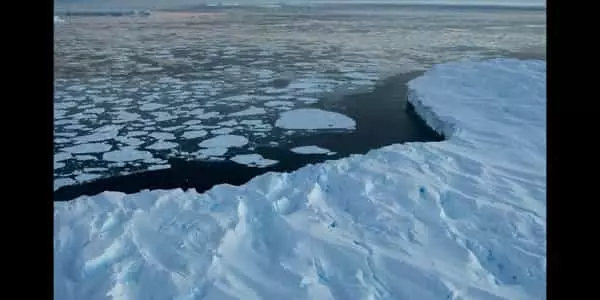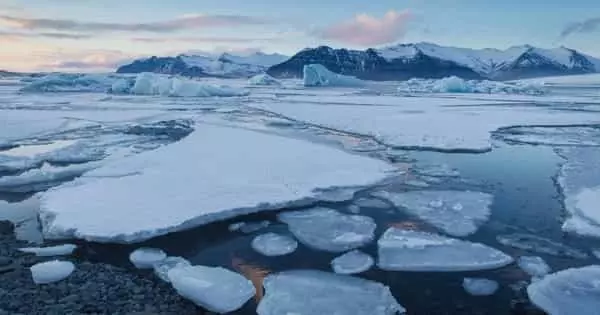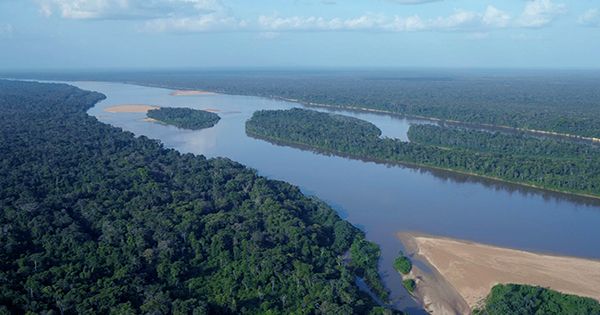According to a report published in the scientific journal Nature Climate Change, the permanently frozen land, known as permafrost, that is thawing in the Arctic at an increasing rate due to global warming could potentially release radioactive waste from Cold War-era weapons production as well as mining damage.
As Arctic ice melts, it will most likely raise sea levels and wreak havoc on ecosystems around the world. However, it has the potential to release chemical and biological hazards that had previously been safely sealed away.
According to research published in the journal Nature Climate Change, these hazards can include ancient or unknown viruses and bacteria, toxic chemicals, and even nuclear waste. According to the BBC, the Arctic permafrost has been a hotbed of industrial activity, resource extraction, and even Soviet nuclear tests, implying that there is a lot of dangerous garbage lurking inside and ready to be released if we continue to scorch the planet.
A rapidly warming the Arctic could cause the spread of nuclear waste, undiscovered viruses, and antibiotic-resistant bacteria. It said potential radioactive waste from Cold War nuclear submarines and reactors and damage from mining could be released as the ice melts.
Thawing permafrost, or permanently frozen land, is widely regarded as a contributor to greenhouse gas emissions because massive stores of Arctic soil carbon are released into the atmosphere as carbon dioxide and methane, as well as causing abrupt changes in the landscape.
However, the study discovered that the implications are far-reaching and poorly understood, with the potential for the release of nuclear waste and radiation, as well as unknown viruses and other hazardous chemicals.
Between 1955 and 1990, the Soviet Union carried out 130 nuclear weapons tests in the atmosphere and near-surface ocean of the Novaya Zemlya archipelago off the coast of northwest Russia. The tests used 224 different explosive devices, releasing approximately 265 megatons of nuclear energy, and over 100 decommissioned nuclear submarines were sunk in the nearby Kara and Barents seas.
Despite the fact that the Russian government has launched a strategic clean-up plan, the review notes that the area has tested high for the radioactive substances caesium and plutonium, which are found in undersea sediment, vegetation, and ice sheets.

Frozen Superbugs
According to the BBC, over 100 different species of microbes trapped in Arctic permafrost are resistant to antibiotics. If they were released and began infecting people or other organisms, the consequences could be disastrous because we would not have treatments in place. And it’s not like we’d be dealing with them one at a time — as the ice melts, microbes from different eras could be released at the same time.
“This review identifies how other risks can arise as a result of Arctic warming,” study coauthor and Aberystwyth University researcher Arwyn Edwards told the BBC. “It has long served as a deep freeze for a variety of harmful substances, not just greenhouse gases.”
“We need to learn more about the fate of these dangerous microbes, pollutants, and nuclear materials in order to properly understand the threats they may pose,” he argued. Unfortunately, because there are over 1,000 Arctic settlements built to support scientific research, military operations, or resource extraction, the researchers argue that any contaminants or biohazards released from the ice will most likely spread.
“What should concern us is how much we still don’t know about the Arctic, how vital it is to all of our futures, and why it is worth protecting,” Edwards added. Edwards urged world leaders to take “demonstrable action” at the United Nations Climate Change Conference in Glasgow next month, noting that investing in more research on the potential impacts of thawing permafrost could be a good place to start.
Another risk is the introduction of byproducts of fossil fuels into permafrost environments since the beginning of the Industrial Revolution. The Arctic also had natural metal deposits, such as arsenic, mercury, and nickel, which were mined for decades and caused massive contamination from waste material across tens of millions of hectares.
If these compounds are released from the permafrost, they have the potential to increase food scarcity by poisoning animals and fish in the area where humans rely for food. Together with nuclear waste, the toxic compounds would emit more greenhouse gases into the atmosphere, significantly contributing to climate change.
















